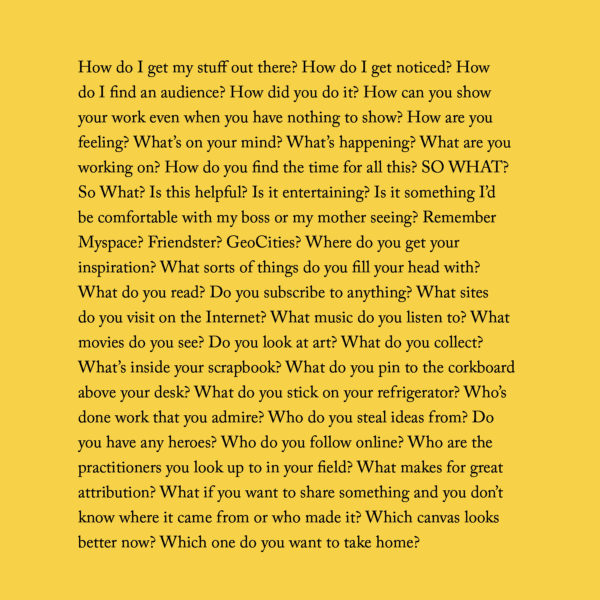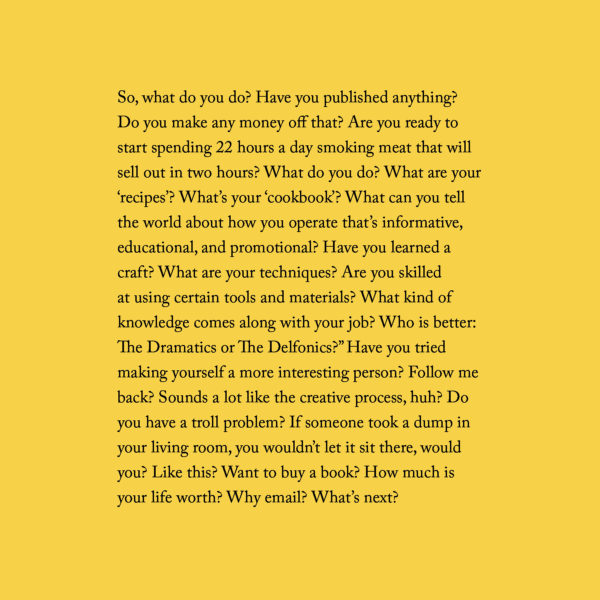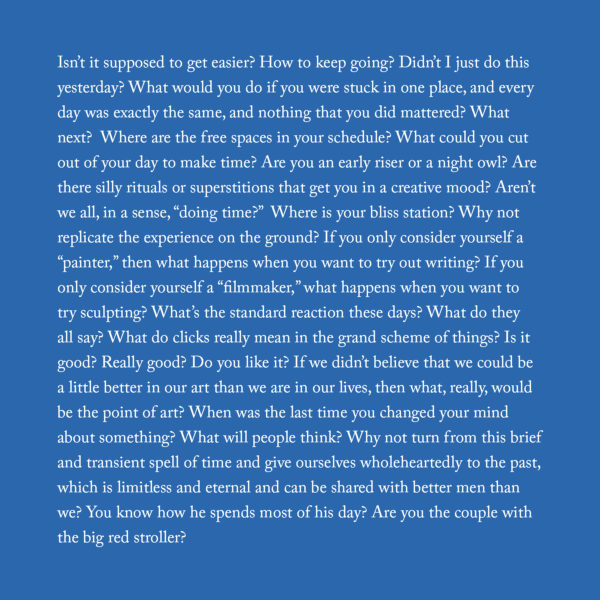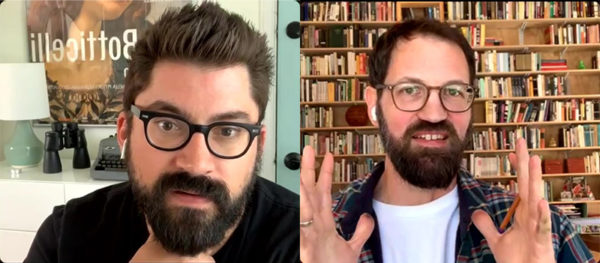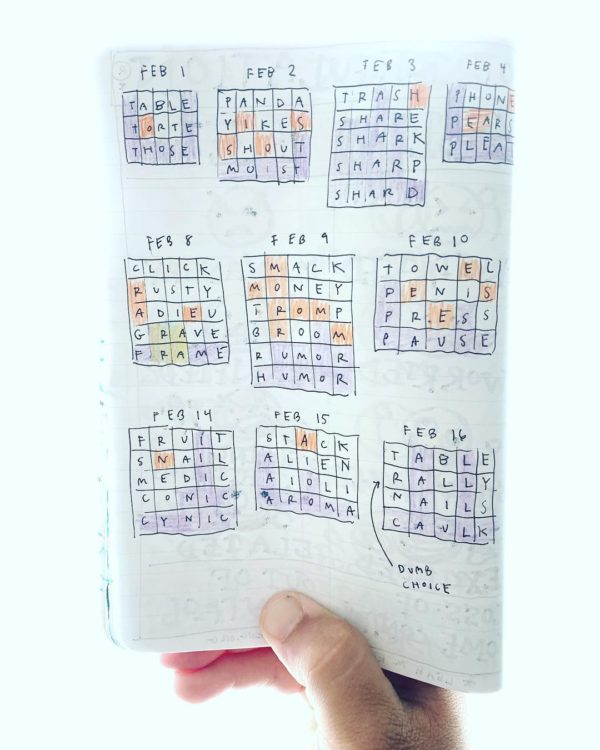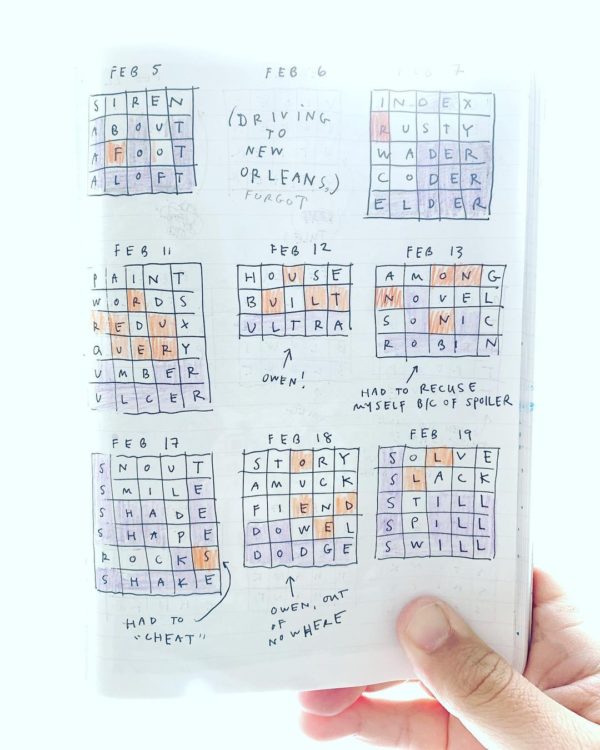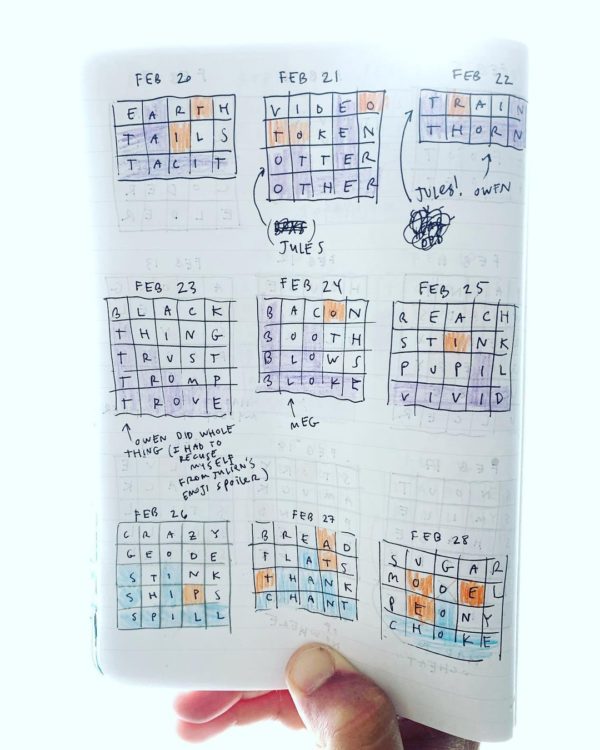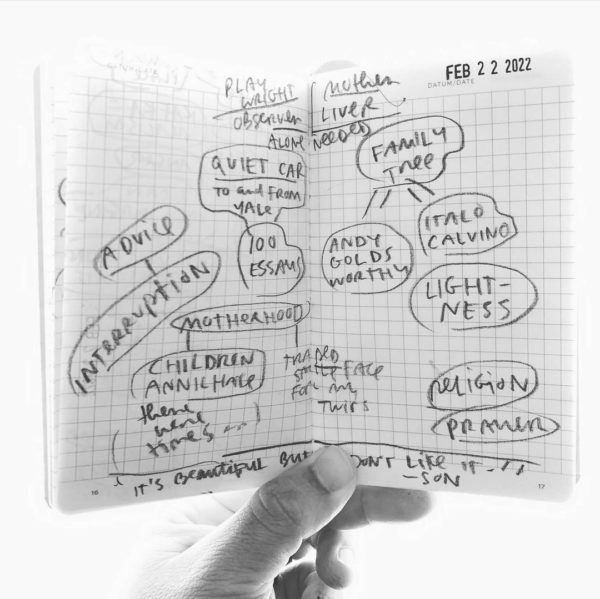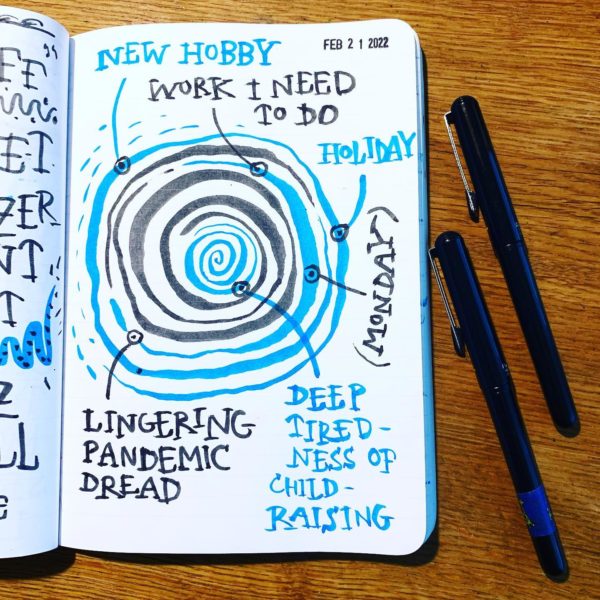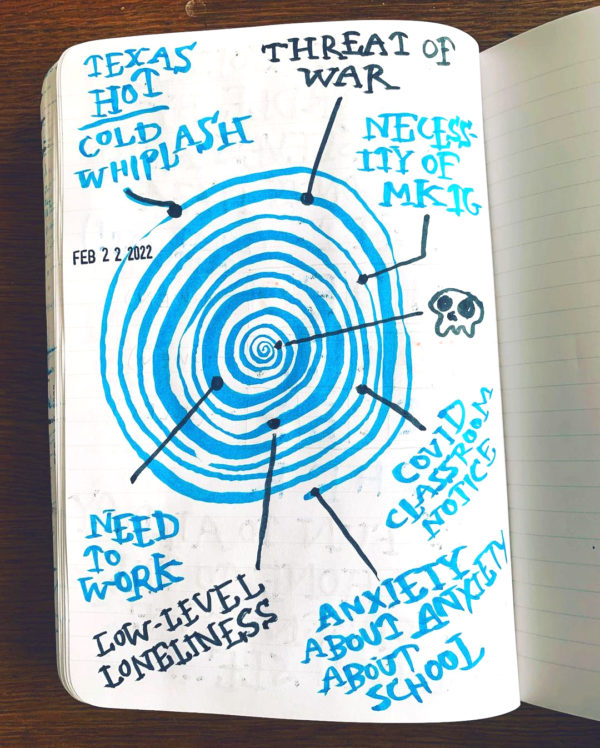
Clive Thompson made an online tool that shows you only the questions in a piece of writing.
I love it because I love questions and also because it turns everything into Padgett Powell’s The Interrogative Mood.
I fed it the complete text of each book in my trilogy. Here’s Show Your Work!:
And here’s Keep Going:
The results are not only funny, they sort of make great summaries for the books.
You can try the tool here.
